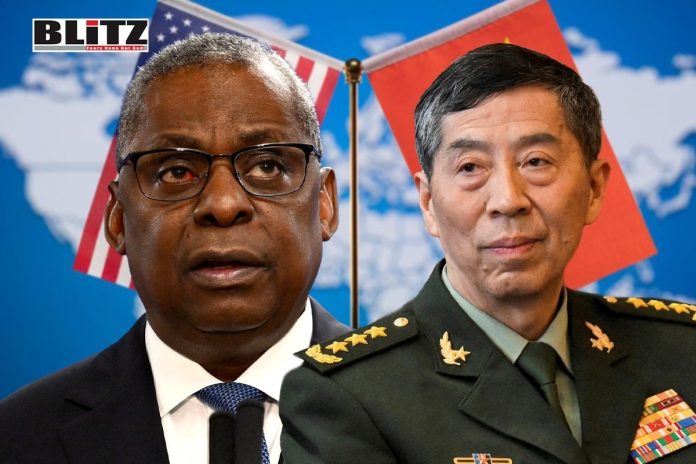In the dominion of geopolitics, the intricate dance between major powers often unfolds through a series of diplomatic maneuvers, strategic posturing, and occasional bouts of tension. Nowhere is this more evident than in the relationship between China and the United States, where the stakes are high, and the margin for error slim. The recent video call between Chinese Defense Minister Dong Jun and US Defense Secretary Lloyd Austin serves as a pivotal moment in the ongoing saga of Sino-American relations, offering both a glimpse into the intricacies of bilateral dialogue and a potential roadmap for future interactions.
The significance of this communication cannot be overstated. It marks the first direct exchange between the defense chiefs of China and the US since November 2022, a period marred by simmering tensions and escalating rhetoric. Against this backdrop, the hour-long conversation, which delved into sensitive issues such as the Taiwan question and the South China Sea dispute, represents a crucial step towards maintaining open lines of communication and averting potential crises.
From the outset, it is clear that both parties approach the dialogue with a mixture of caution and strategic intent. The US, in particular, seeks to gauge China’s stance on key issues while simultaneously asserting its presence in the region through a series of provocative actions. Recent events, including military exercises and the deployment of missile systems, underscore Washington’s commitment to its allies and its determination to uphold a rules-based order in the Indo-Pacific.
Yet, amidst these displays of strength, there lies a deeper undercurrent of uncertainty and ambiguity. China, for its part, remains steadfast in its defense of core interests and territorial sovereignty, issuing a clear warning against any attempts to encroach upon its red lines. The timing of the US-initiated call, coupled with its strategic maneuvers in contested waters, raises questions about Washington’s true intentions and the extent of its commitment to dialogue and diplomacy.
Central to the challenge of navigating China-US military relations is the issue of trust-or lack thereof. Both sides harbor suspicions and grievances, rooted in historical grievances and competing visions of regional order. The legacy of past confrontations looms large, casting a shadow over attempts at rapprochement and cooperation. Moreover, the specter of strategic competition looms large, driving a wedge between erstwhile partners and complicating efforts at conflict resolution.
Against this complex backdrop, the road ahead is riddled with challenges and ambiguities. Restoring trust and nurturing mutual understanding demand a united effort from both China and the US. This effort should be anchored in a steadfast dedication to open dialogue, transparency, and the implementation of confidence-building measures. While the recent video call signifies a positive stride, it must be accompanied by tangible actions and ongoing commitment to ensure meaningful progress and lasting outcomes.
Central to the challenge is the imperative to reconcile divergent interests and discover mutual ground in the pursuit of shared goals. Although disparities are inevitable, they must not obstruct endeavors toward cooperation and partnership. Both China and the US stand to benefit significantly from fostering a relationship characterized by stability and predictability, underscored by reciprocal respect and adherence to global standards. This necessitates a commitment to ongoing dialogue and the cultivation of trust to navigate complexities and advance mutual prosperity.
Central to reaching this objective is the readiness to directly confront and tackle the root causes of tensions. Whether discussing the Taiwan issue, the South China Sea disputes, or broader regional security concerns, open and candid dialogue remains paramount. It is through such constructive engagement that misunderstandings can be clarified, grievances redressed, and a foundation for future collaboration can be laid. This approach is vital for fostering mutual understanding and building a more stable and cooperative relationship.
Moreover, the importance of third-party actors and regional stakeholders cannot be overlooked. Countries in the Indo-Pacific region play a crucial role in shaping the dynamics of China-US relations, exerting influence and mediating disputes. By fostering greater multilateral cooperation and dialogue, these actors can help to de-escalate tensions and promote stability in the region.
In wrapping up, the journey ahead, laden with its challenges, underscores a mutual need to steer towards stability and shared prosperity. The recent video call between the defense chiefs of China and the US highlights the crucial role of dialogue and engagement in bridging differences and fostering trust. Embracing this pivotal moment and intensifying collaborative efforts can pave the way for both nations to aspire to a future characterized by peace, enduring stability, and mutually beneficial growth. This underscores the shared responsibility to cultivate a relationship that serves the interests of both countries and the broader international community.




